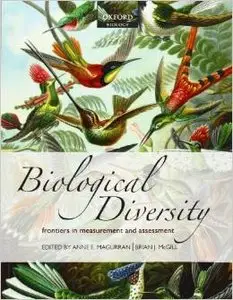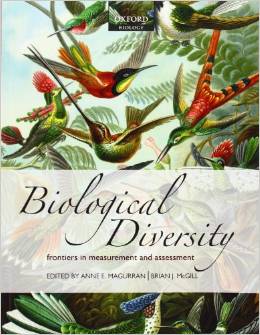Biological Diversity: Frontiers in Measurement and Assessment by Anne E. Magurran
English | Jan 7, 2011 | ISBN: 0199580677, 0199580669 | 368 Pages | PDF | 212,6 MB
English | Jan 7, 2011 | ISBN: 0199580677, 0199580669 | 368 Pages | PDF | 212,6 MB
Biological Diversity provides an up-to-date, authoritative review of the methods of measuring and assessing biological diversity, together with their application. The book's emphasis is on quantifying the variety, abundance, and occurrence of taxa, and on providing objective and clear guidance for both scientists and managers. This is a fast-moving field and one that is the focus of intense research interest. However the rapid development of new methods, the inconsistent and sometimes confusing application of old ones, and the lack of consensus in the literature about the best approach, means that there is a real need for a current synthesis.
Biological Diversity covers fundamental measurement issues such as sampling, re-examines familiar diversity metrics (including species richness, diversity statistics, and estimates of spatial and temporal turnover), discusses species abundance distributions and how best to fit them, explores species occurrence and the spatial structure of biodiversity, and investigates alternative approaches used to assess trait, phylogenetic, and genetic diversity. The final section of the book turns to a selection of contemporary challenges such as measuring microbial diversity, evaluating the impact of disturbance, assessing biodiversity in managed landscapes, measuring diversity in the imperfect fossil record, and using species density estimates in management and conservation.
Reviews:
"The writing is clear throughout, and chapters end with a prospectus on future directions and a summary of key points. The strength of the volume is Parts III and IV on, respectively, species abundance distributions and aspects of diversity other than abundance. The former, in particular, contains a set of closely connected chapters that walk through the various concepts and metrics with clear guidelines on which of the very many metrics are the most useful." – Samuel M. Scheiner, Arlington, Virginia
"Anyone interested in the serious study of biodiversity should have a copy. I suspect it will be standard for years to come." – Biological Conservation



